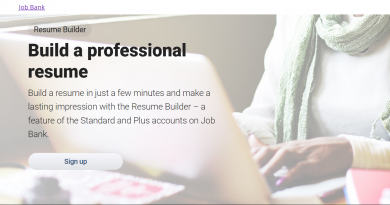Extend or Change Your Live-In Caregiver Program Work Permit
After you pay the biometrics fee with a complete application, we’ll send you a letter confirming that you need to give your biometrics and where you can go. You must show this letter when you give your biometrics.
You must give your biometrics in person. Make sure to book an appointment if this service is offered.
Third party fees
Depending on your situation, you may need to pay third parties for:
- your medical exams
- police certificates
Our instruction guide can help you understand which fees apply to you.
4. Submit your application
If you are also applying for permanent residence at the same time, send both applications in the same envelope, before your current work permit expires.
Make sure you include:
- your file number
- your full name
- your date of birth
- a letter explaining why you are applying for an open work permit
You must submit your application at least 30 days before your current work permit expires. You should also keep a copy of the entire application you submit.
Quit your job
Before quitting your job, you should try to solve your work problems by talking about them with your employer, unless there are problems of abuse. You and your employer can revise your contract once in a while to be sure it works for both of you.
Talk with your employer before taking any action to quit your job. If you decide to quit, give your employer enough time to find a replacement for you.
Check your contract to find out how much time you have agreed to give your employer. However, if you are in a situation where there is abuse, you should leave right away.
You will still need these documents from your employer:
- a record of any overtime hours you worked; and
- an ROE. The ROE indicates:
- your reason for leaving
- hours worked
- gross earnings
- any money paid or payable at the time you left your job.
Only your employer can get and complete the ROE. Your employer is legally responsible to give you an ROE and cannot refuse to do so. If you have difficulty getting your ROE, contact your local ESDC/SC centre and ask officials to contact your employer.
Keep your ROE in a safe place. It is your work record and can serve as proof that you have worked the necessary time to apply for permanent resident status.
For more information on finding a new live-in caregiver position and obtaining a new work permit, refer to:
- Changing jobs
Situations of abuse
If you feel that you have been a victim of abuse in your workplace, you may be eligible for the emergency processing of a new Live-in Caregiver Program work permit to help you transition to a new employer as quickly as possible.
Contact the Call Centre to confirm the eligibility and application requirements for emergency processing of live-in caregiver work permits.
What to do if you lose your job
If you lose your job and need to apply for Employment Insurance benefits, contact the ESDC/SC centre nearest you. You will need your ROE to collect these benefits.
If you have not yet received your ROE, you can still apply for EI. Your employer is legally responsible to give you an ROE and cannot refuse to do so. If you have difficulty getting your ROE, contact your local ESDC/SC centre and ask officials to contact your employer.
Keep your ROE in a safe place. It is your work record and can serve as proof that you have worked the necessary time to apply for permanent resident status.
You will be expected to find a new employer as soon as possible. For more information on finding a new employer and obtaining a new work permit, see:
- Changing jobs
Periods of unemployment will delay the date on which you can apply for permanent resident status.





